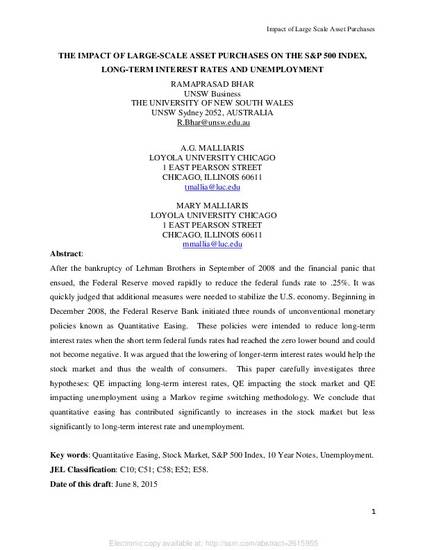
After the bankruptcy of Lehman Brothers in September 2008 and the financial panic that ensued, the Federal Reserve moved rapidly to reduce the federal funds rate to .25%. It was quickly judged that additional measures were needed to stabilize the US economy. Beginning in December 2008, the Federal Reserve Bank initiated three rounds of unconventional monetary policies known as quantitative easing (QE). These policies were intended to reduce long-term interest rates when the short-term federal funds rates had reached the zero lower bound and could not become negative. It was argued that the lowering of longer-term interest rates would help the stock market and thus the wealth of consumers. This article carefully investigates three hypotheses: QE impacting long-term interest rates, QE impacting the stock market and QE impacting unemployment using a Markov regime switching methodology. We conclude that QE has contributed significantly to increases in the stock market but less significantly to long-term interest rate and unemployment.
© Taylor & Francis 2015
Available at: http://works.bepress.com/atassos-malliaris/17/

This is an Accepted Manuscript of an article published by Taylor & Francis in Applied Economics on May 26, 2015, available online: http://www.tandfonline.com/doi/full/10.1080/00036846.2015.1061646